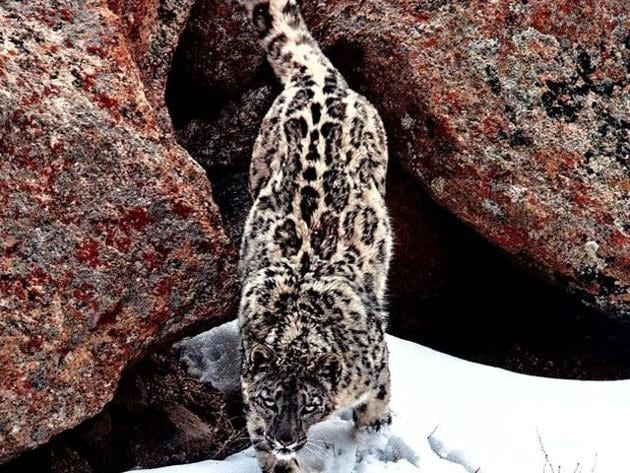Snow Leopard to be removed from ‘endangered’ list
There are only around 400-700 snow leopards in the wild in India. It is a schedule I species that enjoys the same protections as the tiger.
The International Union for Conservation of Nature (IUCN) will remove the Snow Leopard from its list of endangered species, the widely cited Red List. An updated version of the Red List, that is considered the most comprehensive global inventory of threatened species is expected on September 14.

In India, the species is found in the Himalayan belt in Jammu and Kashmir, Himachal Pradesh, Uttarakhand, Sikkim and Arunachal Pradesh, and is a Schedule I species, enjoying the same protections as the tiger. The IUCN proposal was met with concern in India which hosts a population of about 400-700 with conservationists being divided about the implications of the move.
Removal of the species from the red list indicates that their populations are rebounding, which is a positive sign. But some conservationists worry that downlisting the species from ‘endangered’ to only ‘vulnerable’ would signal that the species does not require the same amount of attention and resources as before.
“The proposed downlisting, based on inadequate information is not a good idea,” Rishi Kumar Sharma, who heads the snow leopard at WWF-India, said. “The IUCN does have a precautionary principle which is applicable in specific cases like this where a decision based on poor information may put a species at risk and therefore it is considered prudent to keep a species in a high-risk category”
Some also believe that the decision is based on flawed data.
“A group of scientists feels that snow leopards should no longer be classified as Endangered. They are suggesting that there are more snow leopards than previously believed, and that conservation efforts being made have reduced its rate of decline,” Charudutt Mishra, a director at the Snow Leopard Trust. said. “However, there is little scientific evidence for these claims.”
Snow Leopards are very elusive species that are found at elevations of 3000-5000 metres which makes population estimations difficult.
Threats to snow leopard populations persist. These include poaching, retaliatory killing by farmers, declining prey species, shrinking habitats, and climate change.
In 2009, India announced Project Snow Leopard that was launched in 2010 for a period of four years. However, the project seemed to have disappeared without a trace, much like the species itself. Officials at the environment ministry were even unaware that such a project ever existed.
Though Project Snow Leopard was never fully implemented the IUCN move is not likely to change the status of the snow leopard in India.
The United Nations Development Programme recently partnered with the environment ministry to launch the SECURE (Securing Livelihoods, Conservation, Sustainable Use and Restoration of High Range Himalayan Ecosystem) project with an outlay of USD 12 million (nearly ₹77 crore). Four Indian states will receive funds under the program to conserve snow leopard habitats and for protection of the species.
The government reaffirmed its commitment towards snow leopard conservation at the recently held Bishkek forum, where 12 Snow Leopard range countries set the goal of securing 20 snow leopard landscapes by 2020.





